Open, friendly and tolerant – three words that immediately spring to mind when I think of Kuala Lumpur.
To be honest, even though I don't really want to admit it, travelling to a Muslim country for the first time in my life, and alone as a woman, did make me feel a little uneasy. But this feeling quickly proved to be completely unnecessary. Because although this country may be Muslim, which sadly conjures up certain prejudices in us Europeans, this is completely irrelevant when you are travelling as a tourist. Not only is it completely irrelevant in the midst of this multicultural and vibrant city whether you wear a chador or a miniskirt as a woman, there is also no (at least no apparent) fear of contact between the religions.
If you've ever been to Kuala Lumpur, did you feel the same way?
Religions – we are mainly talking about Islam, Hinduism and Buddhism (I visited a Taoist temple, which is Chinese in character, but of course there is also Theravada Buddhism, which is well known in Thailand, and many other forms). This is because Malaysia has a very large Chinese and Indian population.
In such a multi-religious society, it is clear that many important spiritual and religious sites have accumulated in the capital, and I visited four of them: the Hindu Sri Mahamariamman Temple, the equally Hindu and wonderful Batu Caves, the Buddhist-Taoist Thean Hou Temple, and the magnificent Masjid Jamek Mosque.
Places of religious encounter in Kuala Lumpur
We'll start with
Sri Mahamariamman Temple
The Hindu temple, with its inspiring colours and details, is located on the edge of Chinatown – tucked away in an inconspicuous, narrow alley between other buildings. When you turn into this street and wonder where the temple might be, you suddenly find yourself standing in front of the impressive portal of the almost unpronounceable temple with its many M's.

Admission is free (you can make a donation for the temple inside), and you can leave your shoes in storage (also free of charge) to the left of the entrance. The dress code stipulates that shoulders and knees must be covered. If your skirt is too short, you can easily borrow a cloth to use as a long skirt.
The large rectangular courtyard is dominated by the large, open prayer hall, supported by many columns. Sitting here is a very relaxing experience: you are secluded from the constant traffic noise, there is plenty to see and observe, and the cool tiles and shade do the rest in this incredibly hot and humid city.
Three different shrines are located in this central hall.
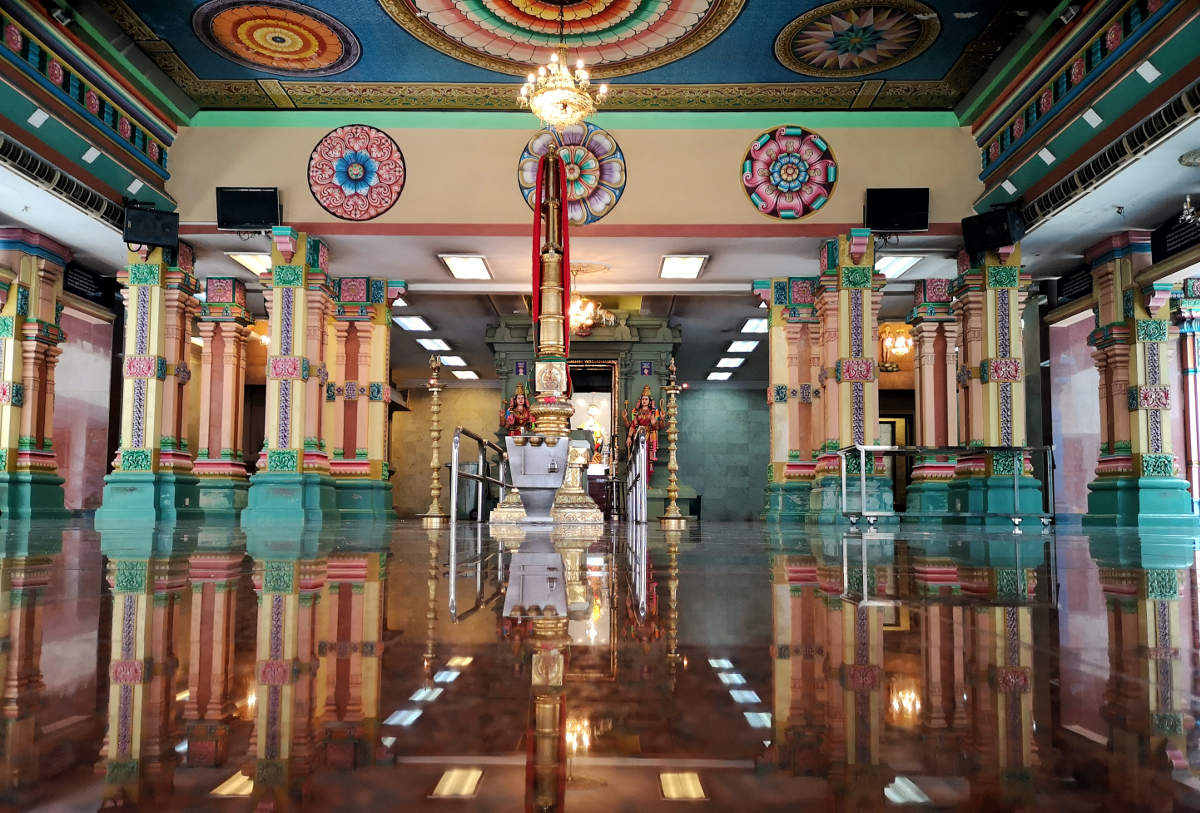
Around the hall are four other shrines, all dedicated to different deities. They are accompanied by beautiful figurative representations, mosaics, murals, colours and shapes.
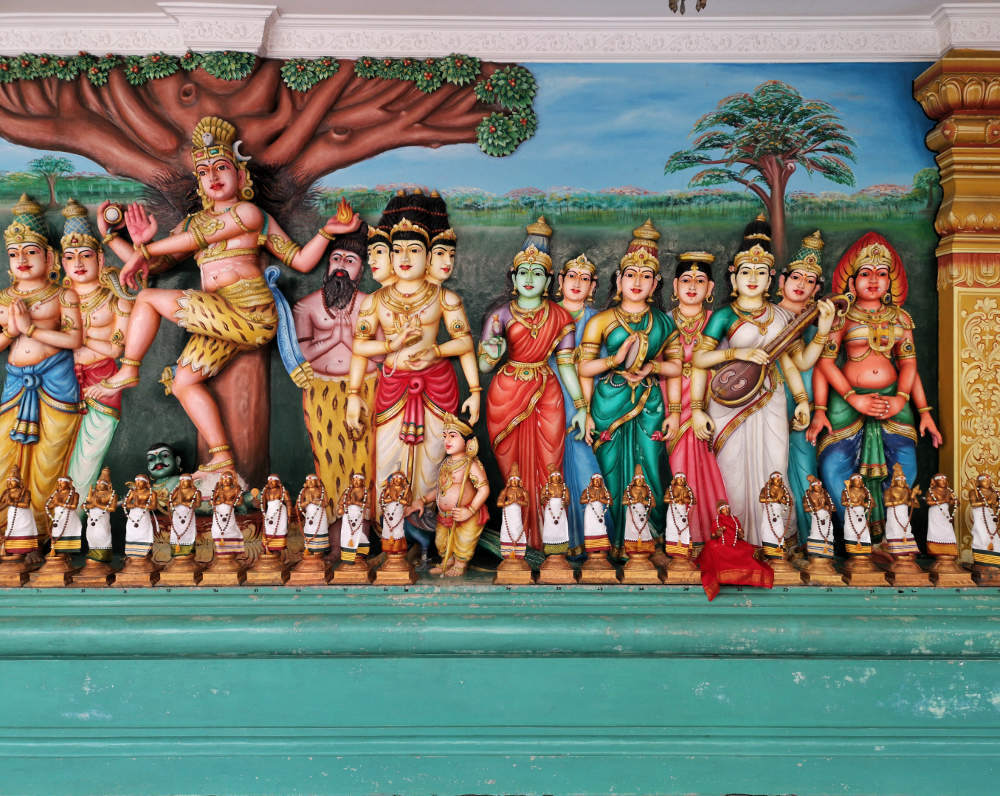

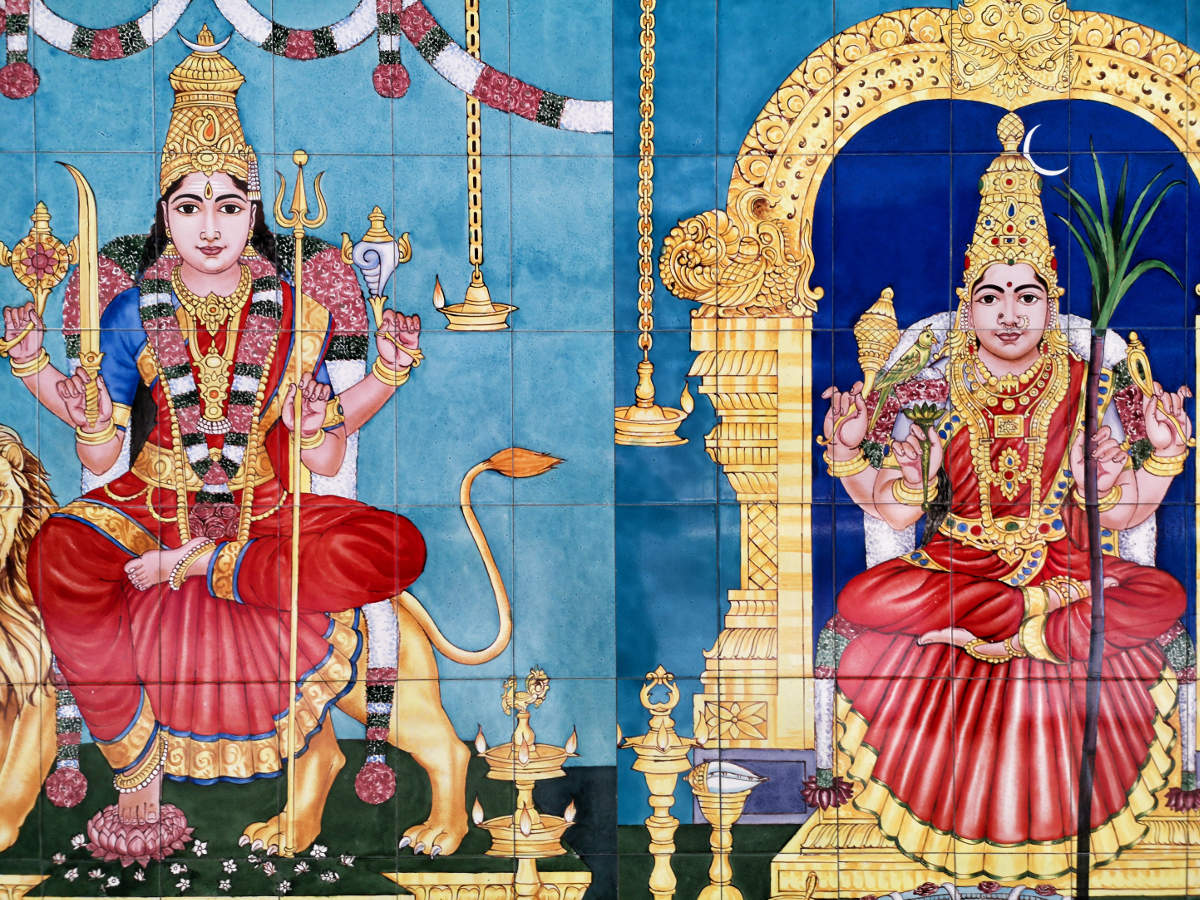
By the way, I don't know how you feel about this, but I always feel a little out of place in a temple where visitors are constantly praying. I'm always afraid of disturbing the worshippers as they practise their religion. But now I know that there's no need to feel uncomfortable here. Keeping your distance from those who are praying and showing appropriate respect is enough (and unfortunately, for some tourists, this seems to be too much to ask...).
When I left the temple, I was approached by a very friendly temple employee (incidentally, the Malaysians are all extremely friendly – you hear ‘How are you/Where are you from/What's your name/Have a nice day’ several times every day). He explained to me that the Sri Mahamariamman Temple is, so to speak, the outpost of the Batu Caves – these two temples are closely connected. Once a year in January or February, a procession of worshippers sets off on foot from the temple to the Batu Caves to celebrate the Thaipusam festival. It must be an impressive spectacle.
Address: 163, Jalan Tun H. S. Lee, Kuala Lumpur
Opening hours: daily from 6:00 a.m. to 9:00 p.m.
Batu Caves
The Batu Caves, located a few kilometres north of Kuala Lumpur in the suburb of Batu, are certainly Malaysia's most famous tourist attraction. They are limestone caves in a huge rock/mountain that form a Hindu sanctuary or temple. Everyone is probably familiar with the image of the colourful stairs leading up to the large main cave, flanked by a huge statue of the deity Murugan.
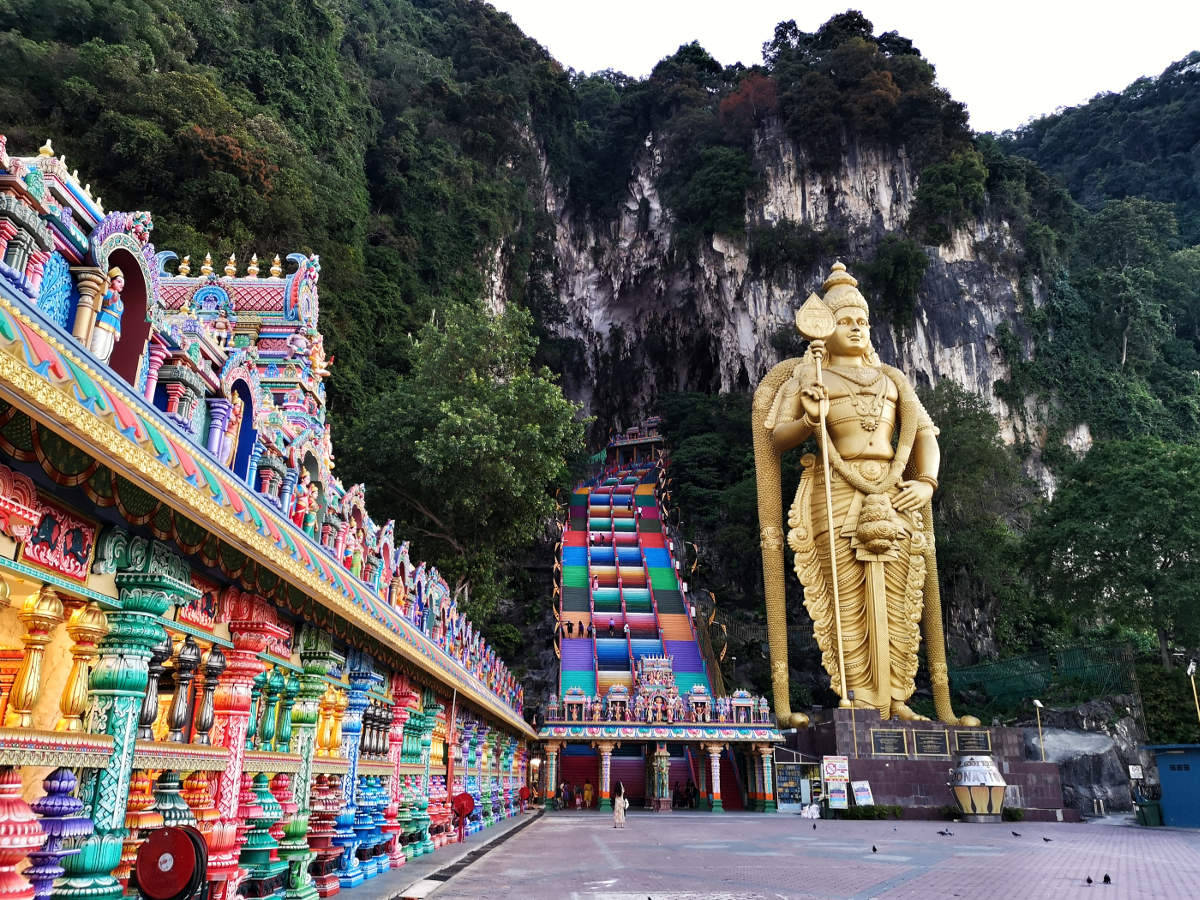
By the way, if you're wondering how it is that there are no or hardly any visitors in the picture, don't worry – you just have to be here at 7:15 in the morning, like I was. Early risers have a clear advantage. From around 8 o'clock onwards, the area quickly fills up with tourists.
The beautifully coloured pillars on the left side of the photo mark the boundary of a temple belonging to the Batu Caves, where worshippers pray. It is also open to visitors free of charge.
But the main reason everyone comes here, and of course the big attraction, is this beautiful colourful staircase! In addition to worshippers, there are also a few other tourists and some athletes who use it for fitness training in the early morning. It has only been colourful for a few years, and if you want to take photos there without being disturbed, you should definitely be an early riser! 🙂

After climbing the many steep steps, you find yourself in the large cave of the Batu Caves, known as the Temple or Cathedral Cave. At the end of this cave, another flight of stairs leads up to the rear cave, which houses another prayer hall and is bathed in natural light thanks to its opening at the top.
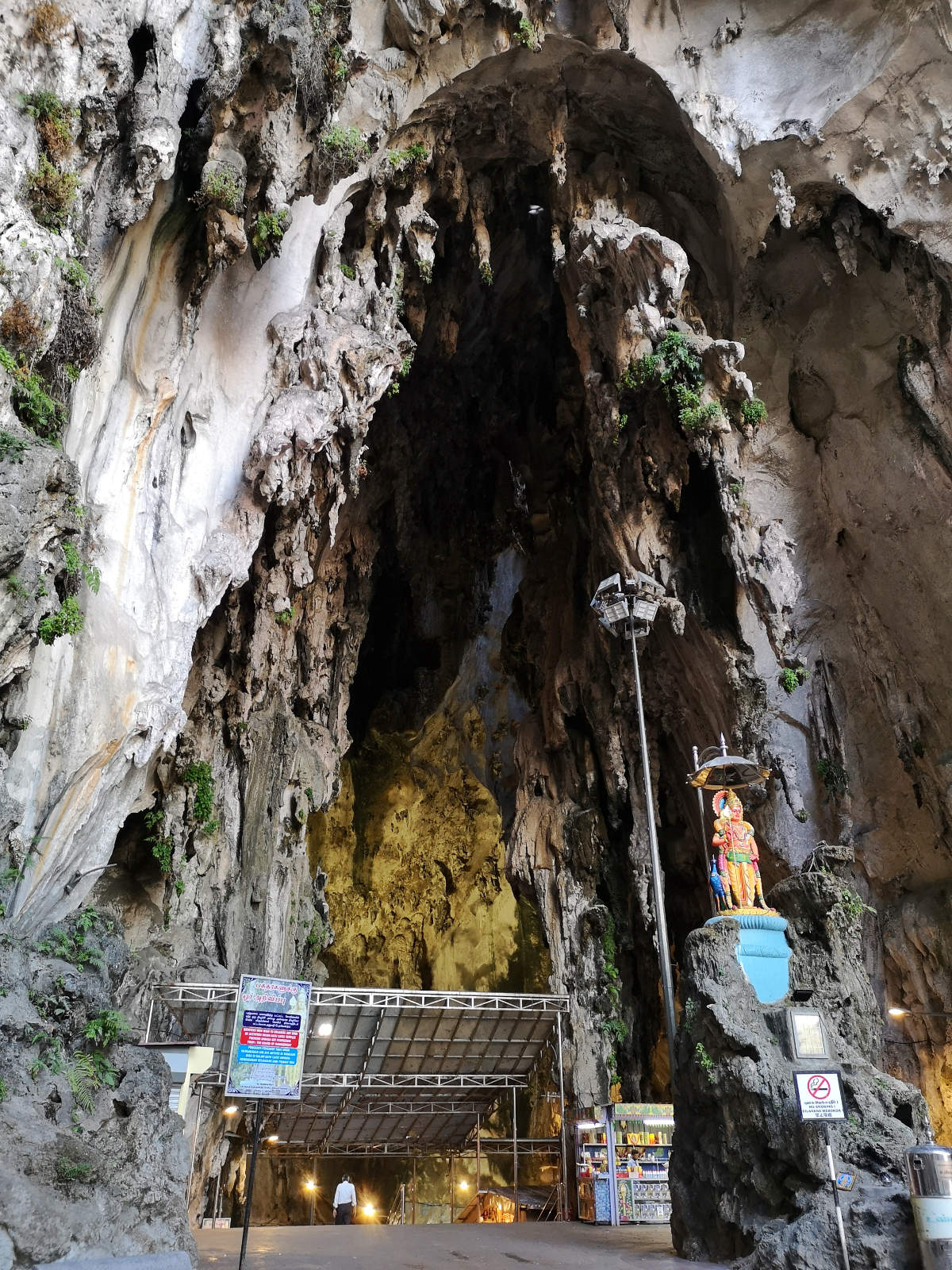
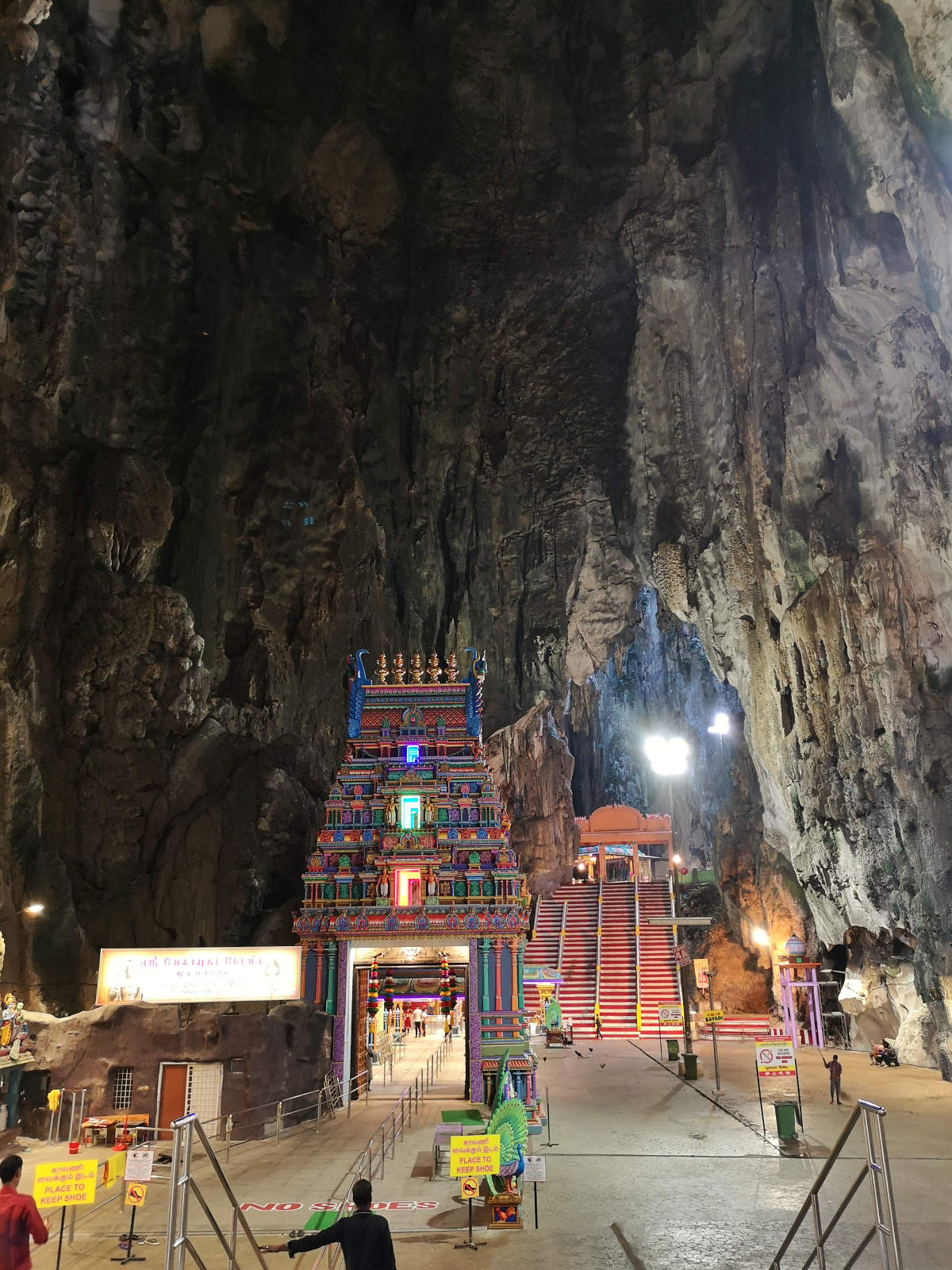
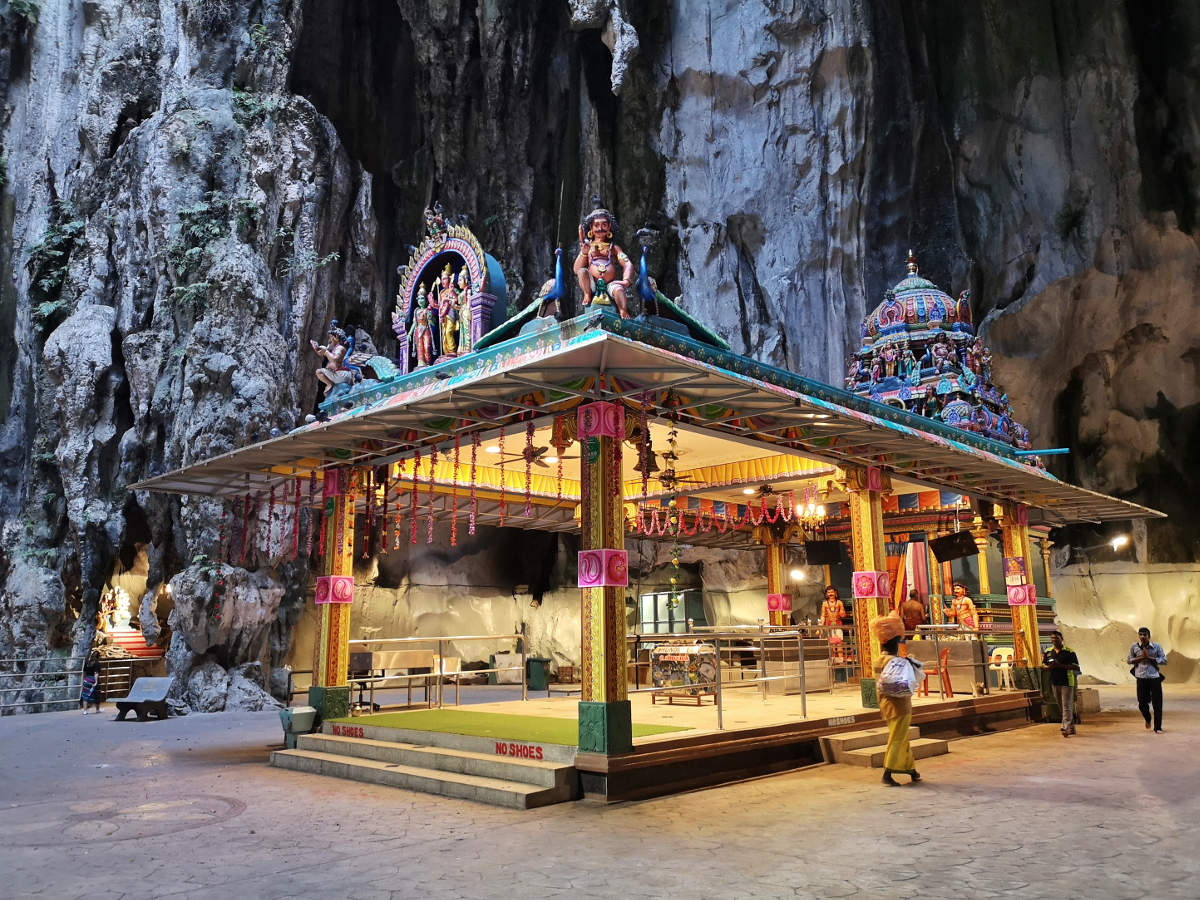
The limestone rock formations would be impressive enough on their own. They form enormous stalactites and stalagmites at the edges and at the entrance.
But the prayer halls, with their rich detail and lovingly decorated features, are particularly worth spending time exploring. Incidentally, in Hinduism, the peacock is considered the mount of several gods, especially the god of war, Skanda. It is also a symbol of power and beauty.
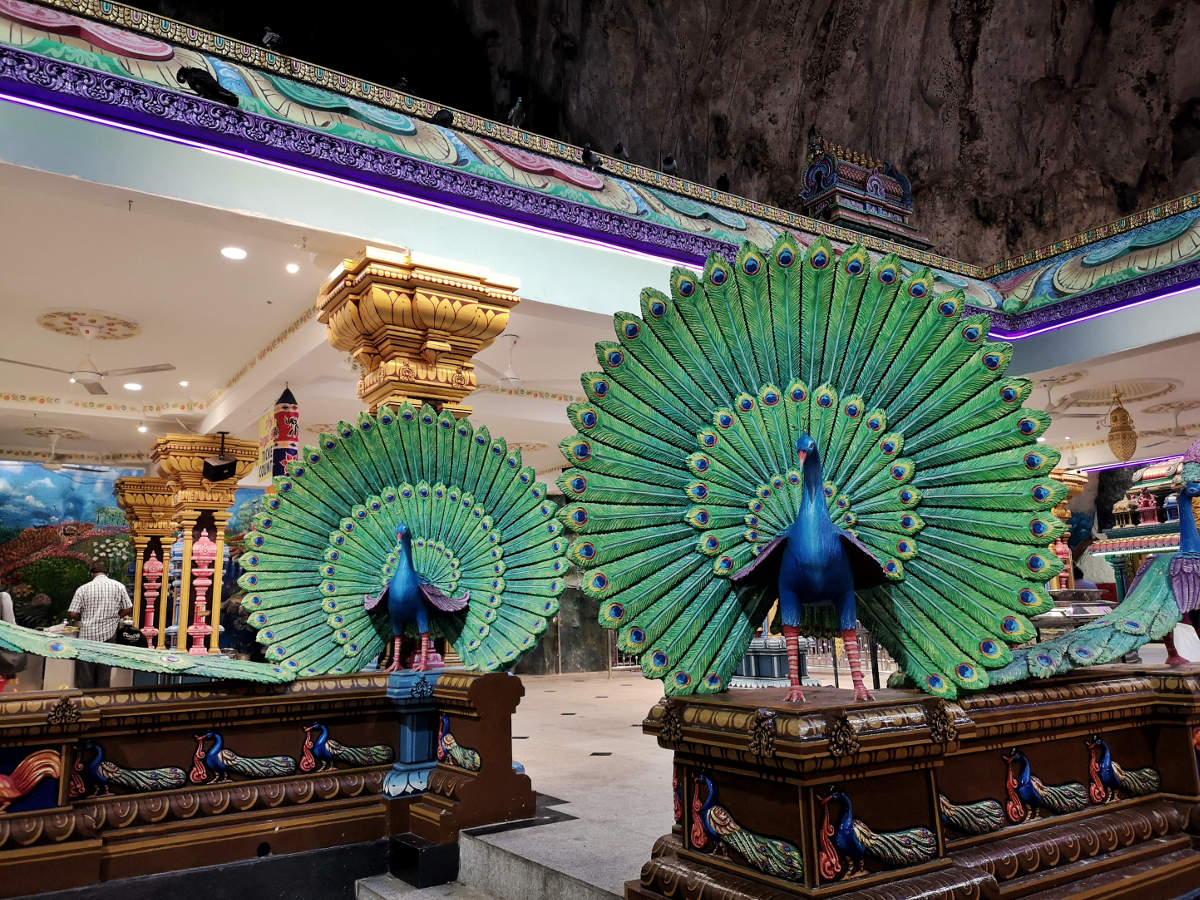
And, of course, we mustn't forget the unofficial highlight: the Javanese monkeys, who live wonderfully off the generous, but not always voluntary, food donations from tourists. They enjoy being photographed, but petting them is not recommended as they may bite.
Address: Gombak, 68100 Batu Caves
Öffnungszeitenfrom around 6:00 a.m. until after sunset
How to get there: funktioniert mit dem Kommuter-Train von KL Sentral, ich empfehle aber ein Taxi oder ein Grab Car (über die Grab App). Das ist schneller, günstig und richtet sich nach euch.
Thean Hou Temple
Der Thean Hou Tempel ist ein echtes Highlight unter den Sehenswürdigkeiten von Kuala Lumpur. Das große und prachtvolle Gebäude sitzt auf dem Hügel des Stadtteils Robson Heights, einer sehr wohlhabenden Wohngegend. Wie bei den Batu Caves ist auch hier ein früher Start (ab 8:00) das Stichwort, denn später wird Bus um Bus voll mit chinesischen Gläubigen und Touristen einfahren.
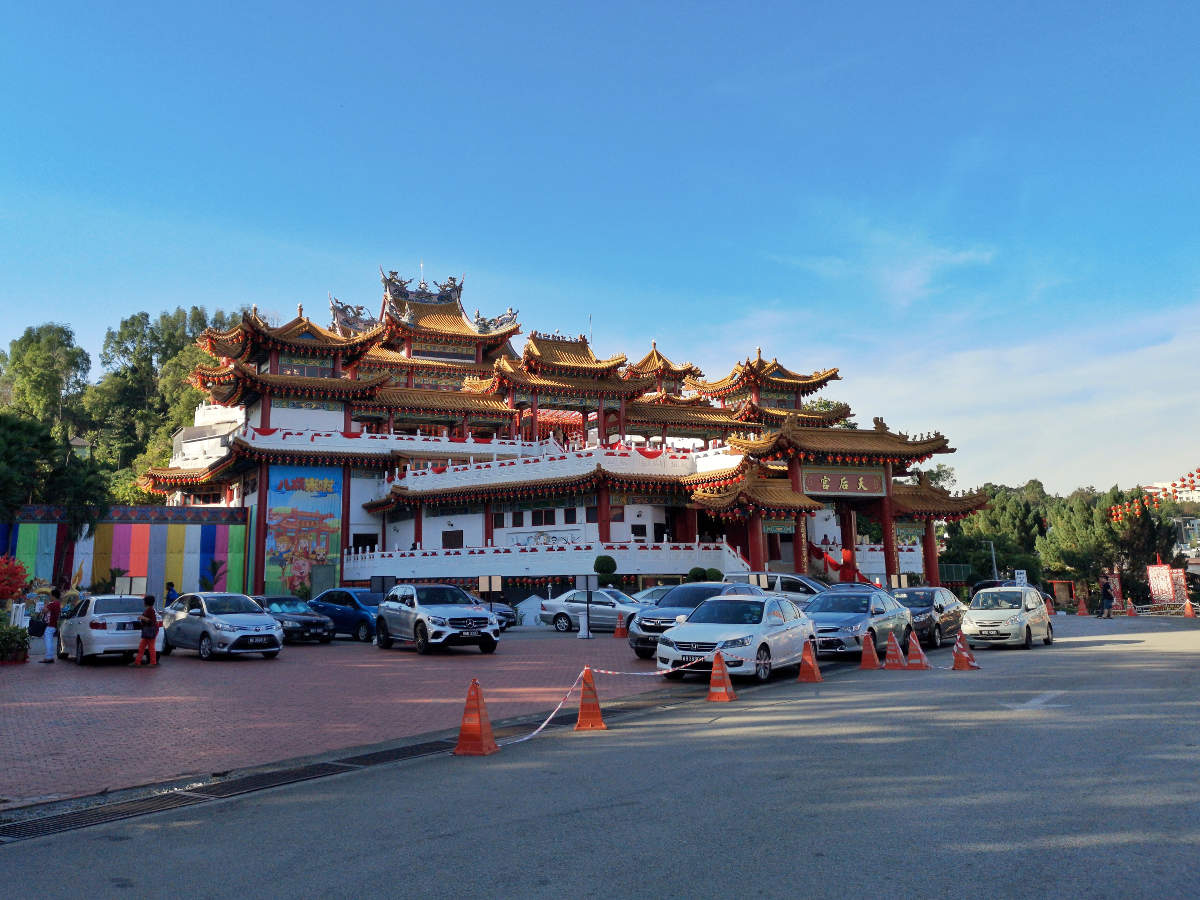
The temple has four levels. There is a restaurant in the basement, which was not open when I visited early in the day. If you follow the entrance portal one floor up, you will find yourself in front of a large banquet hall, which is used for celebrations and weddings.
The second floor is particularly interesting, where you will find the large square with the adjoining prayer hall. When I was there, the square was covered with hundreds of red lanterns – I am not sure if this is always the case or if they were still hanging there to celebrate Chinese New Year. In any case, it looks really impressive!

If you turn around 180 degrees from this view, you have a great view of the many skyscrapers of Kuala Lumpur from here.
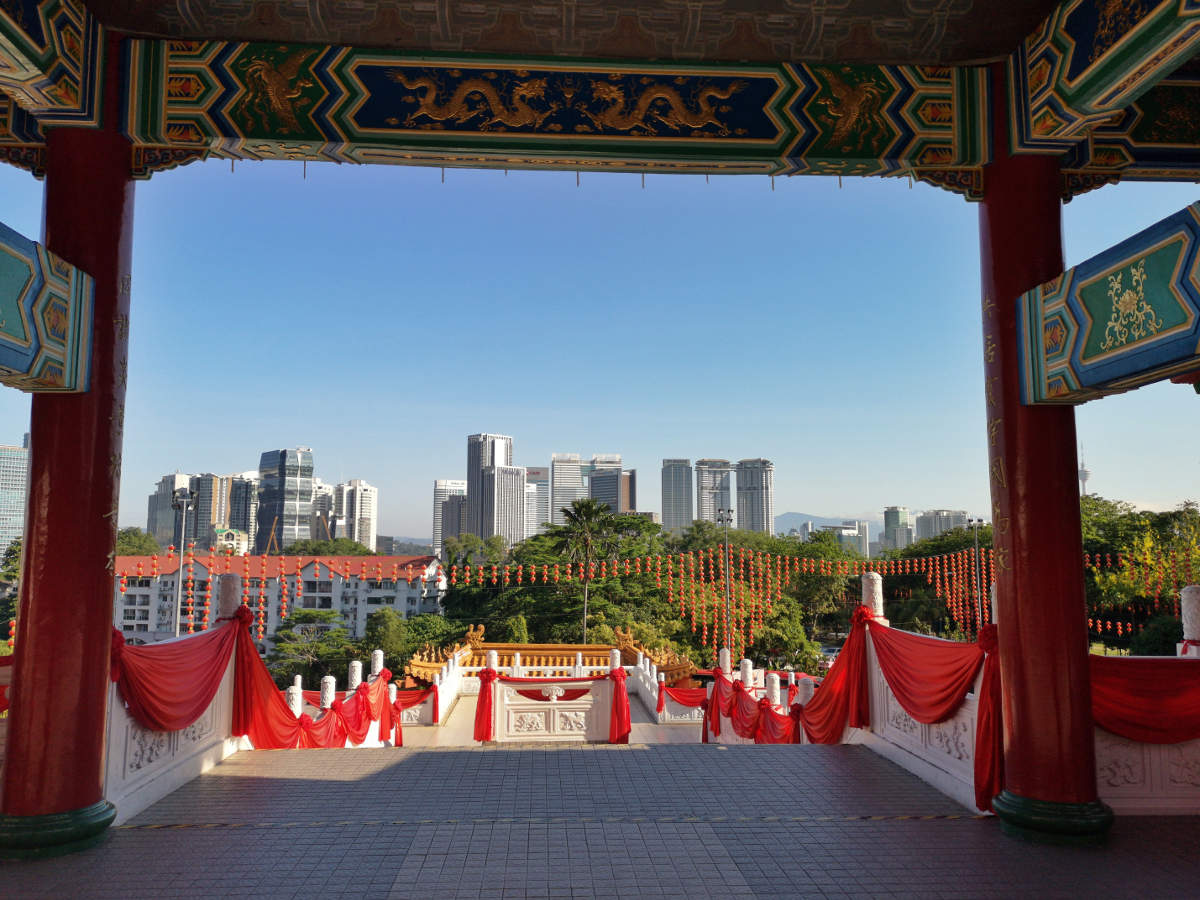
Those who appreciate the numerous and rich details of Chinese temples will need plenty of storage space on their smartphones here at Thean Hou Temple. From one floor up, you have the best view of dragons, curved roofs, phoenix figures and delicate roof edges.
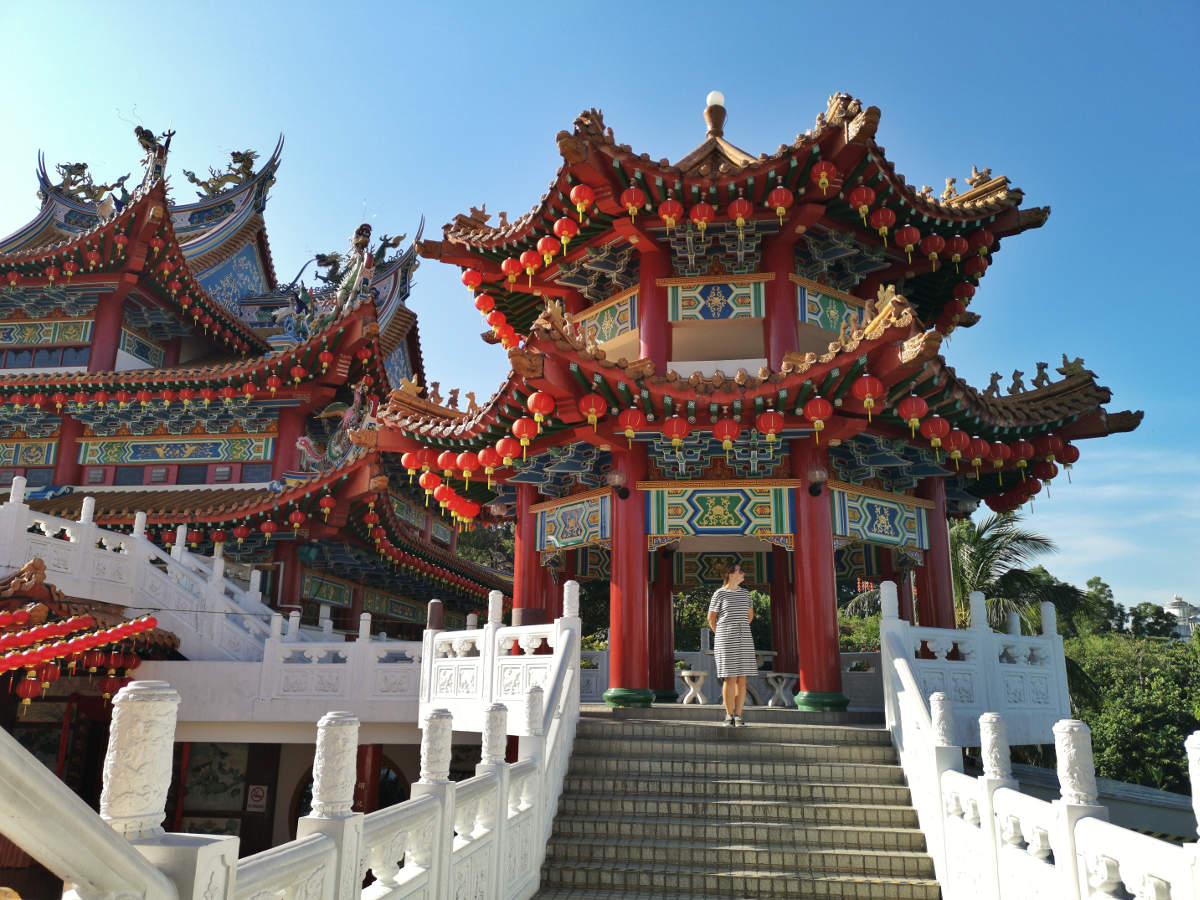
Address: 65, Persiaran Endah, Taman Persiaran Desa, 50460 Kuala Lumpur
Opening hours: 8:00 a.m. – 6:00 p.m.
Getting there: Possible by public transport, but then a 25-minute walk, half of which is uphill. It's more comfortable by Grab Car.
Jamek Mosque
Known locally as Masjid Jamek, this beautiful mosque stands at the confluence of the Klang and Gombak rivers, marking the exact spot where Kuala Lumpur was founded.
Masjid Jamek is the first mosque I have ever visited. So I didn't really know what to expect, but I was really excited to see the architecture, which looks so magnificent from the outside.
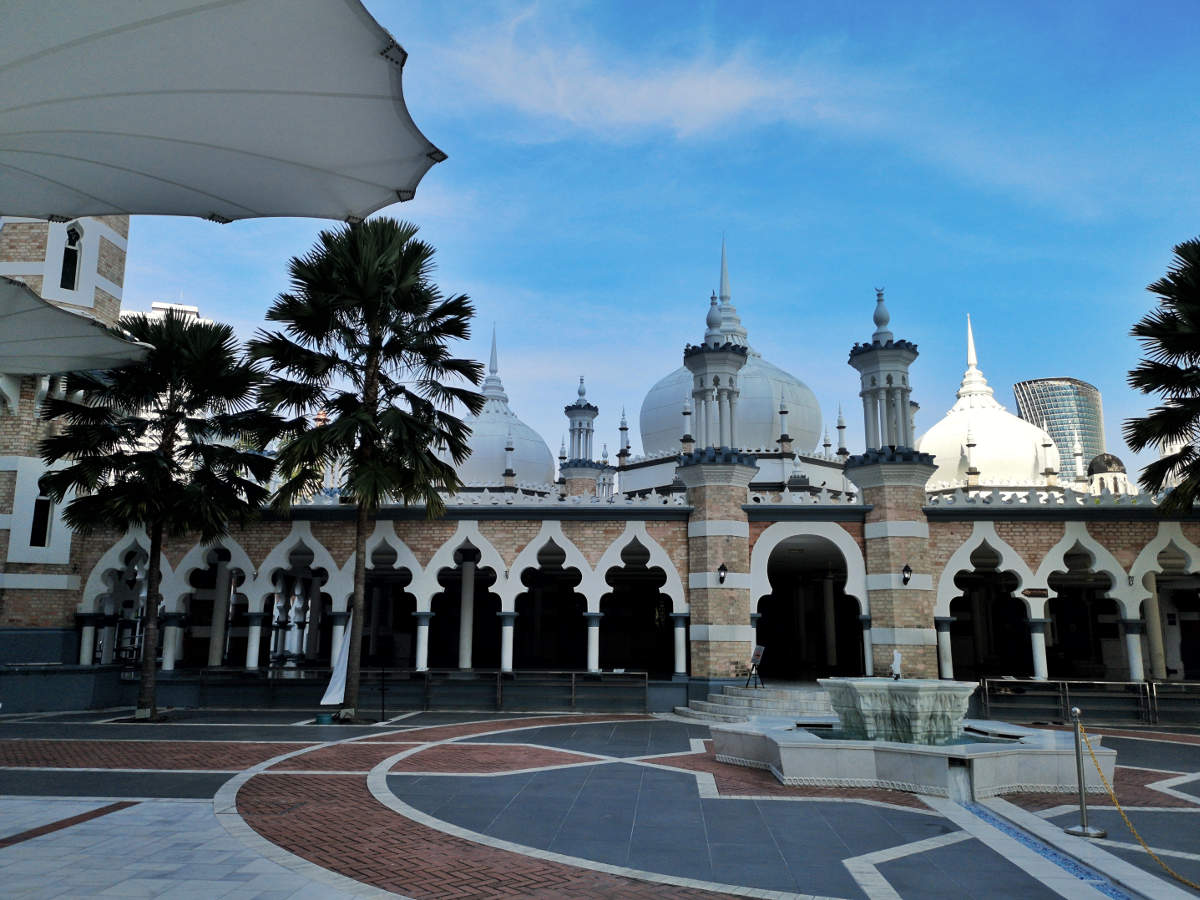
It was pure coincidence that, after returning from the Batu Caves, I found myself standing at the entrance to the mosque at exactly 10 o'clock – just as it was opening to the general public.
As you can imagine, the dress code here is stricter than in Buddhist and Hindu temples. Men must cover their shoulders and wear long trousers, women must wear floor-length robes and cover their hair. For women, there is a whole rack of robes available to borrow free of charge, which really have very little in common with what we know of Muslim women's clothing. With my little coat, I looked like a big purple Smurf.
Men who come in shorts don't fare any better, by the way. The long harem pants that are then taken out also offer plenty of photo opportunities!
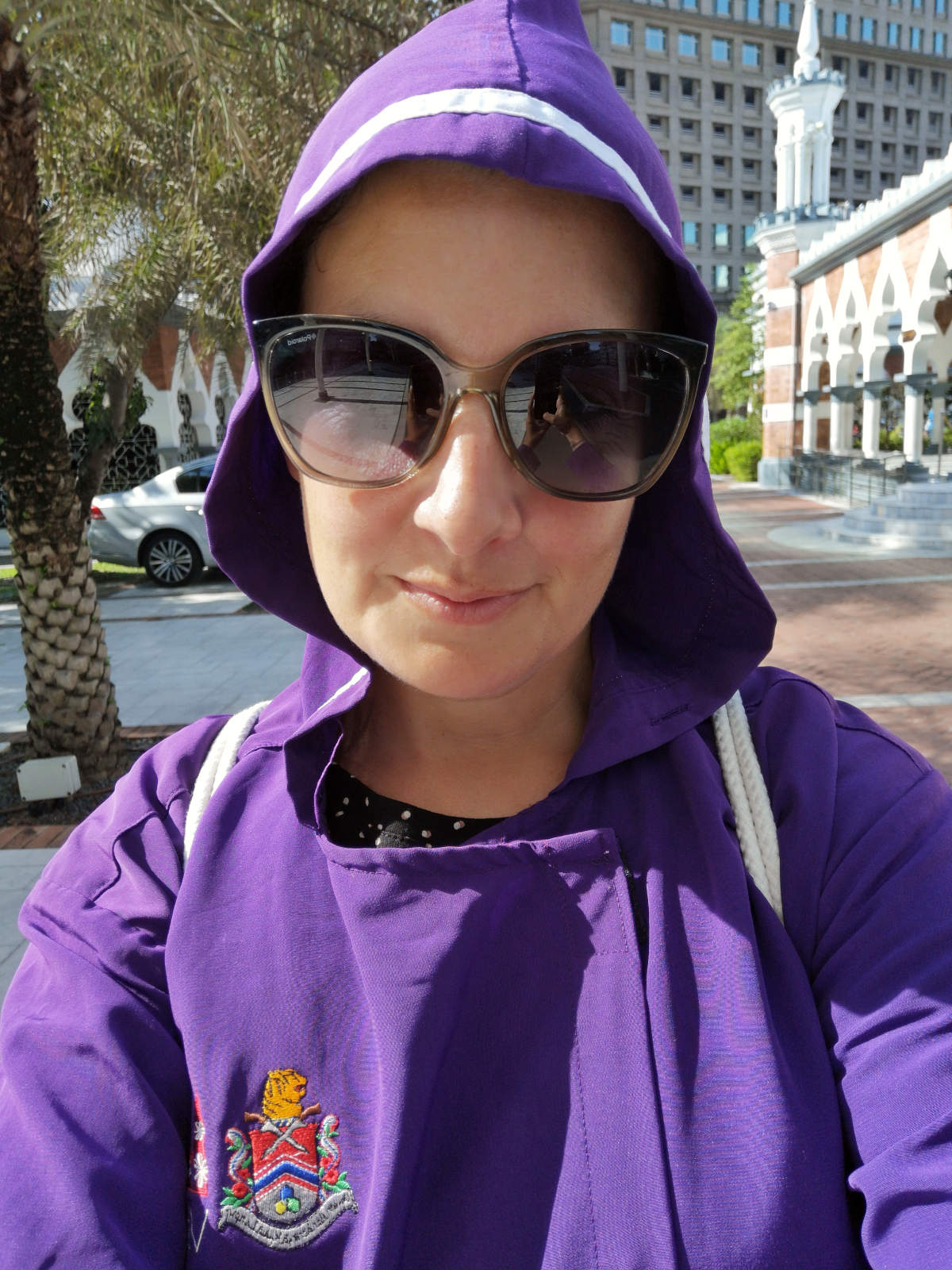
With my purple robe, I was now free to roam the grounds of the mosque. Most of it is taken up by the large hall with the main prayer room. Since worshippers can come to pray at any time, only the entrance area of the prayer room itself is accessible to visitors. From here, however, you have an excellent view and are greeted warmly by guides who are eager to share their enthusiasm for the mosque and their faith with visitors.
I immediately placed myself in the knowledgeable hands of a guide, who not only told me a lot about the founding of the city of Kuala Lumpur, the location of the mosque and the buildings, but also about other styles of mosque construction in Asia. I also learned about the practice of faith, which was really fascinating.
Did you know, for example, that heavenly points are awarded for praying? Men are expected to come to the mosque to pray more strictly than women. This is because women often have maternal and household duties on the one hand, but on the other hand cannot come to the mosque when they have their period, for example. And it is praying together in a group that counts. So, if men pray alone, they only get one point, but 27 if they pray in the mosque with others. Women, on the other hand, also get 27 points for praying at home, even if they do so alone.
‘Allah is fair,’ says my lovely guide and laughs.
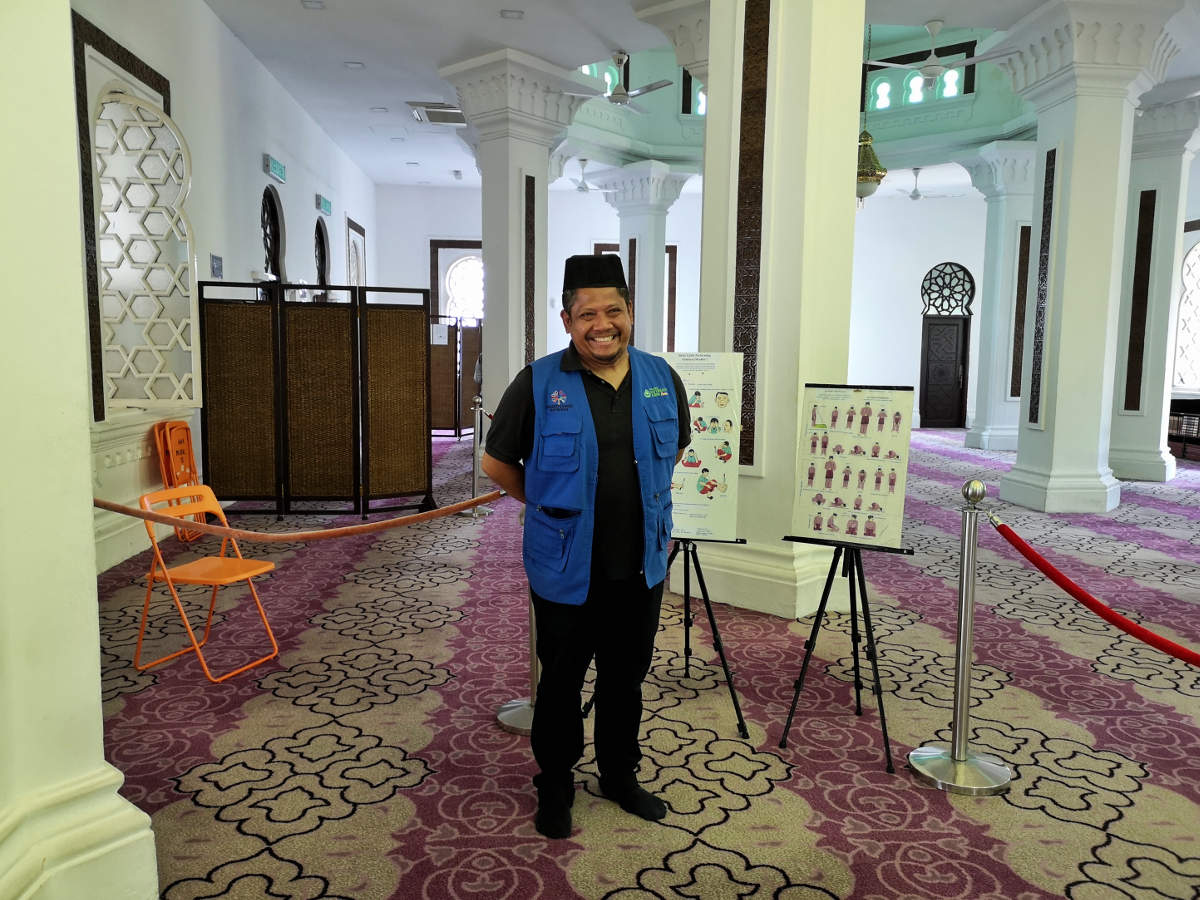
For me, however, the biggest highlight of the Jamek Mosque is the garden. What a wonderful, peaceful, well-kept place in the middle of the urban desert. Sitting here in the shade of the trees and palm trees, resting your feet on the cool lawn and listening to the splashing of the beautiful fountain feels like a mini-break during a city holiday, and this place alone makes it worth visiting the mosque.
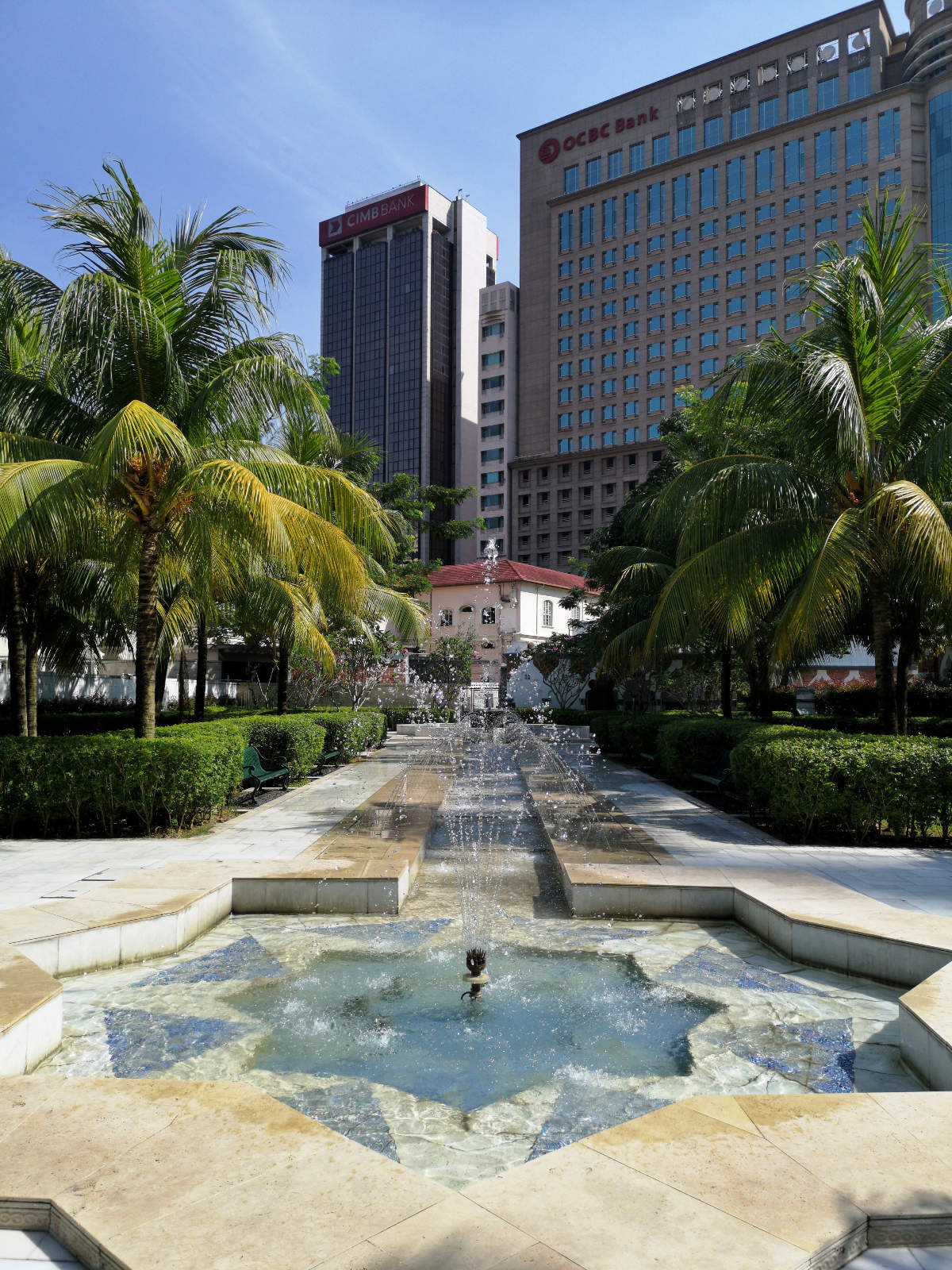
And another real must-do: come back in the evening and admire the beautifully illuminated mosque from the outside.
Opening hours: Saturday – Thursday 10:00 a.m. – 12:30 p.m. and 2:30 p.m. – 4:30 p.m. Closed on Fridays.
Address: Jalan Tun Perak, Kuala Lumpur
Getting there: Simply take public transport to Masjid Jamek station.


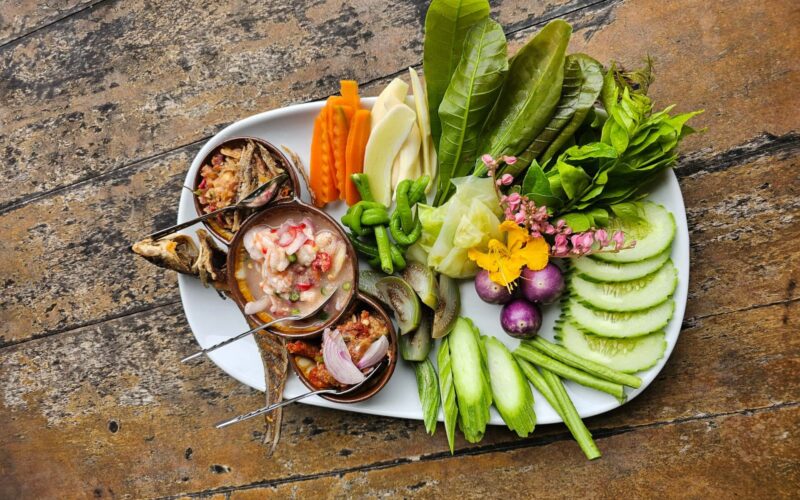
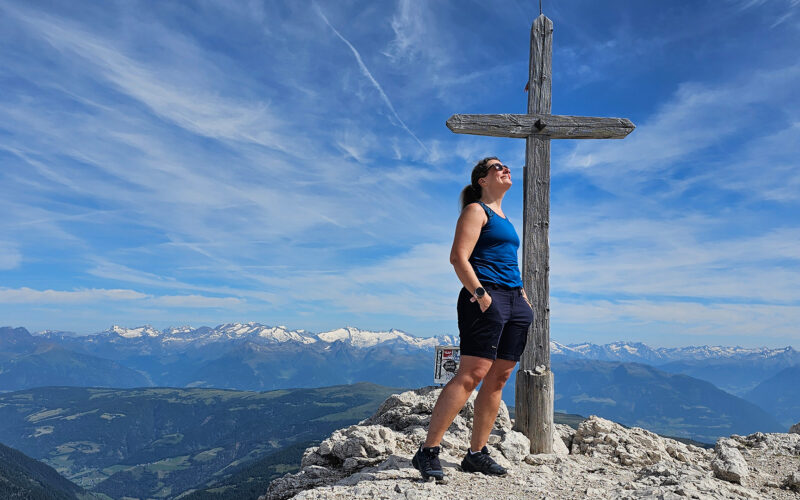
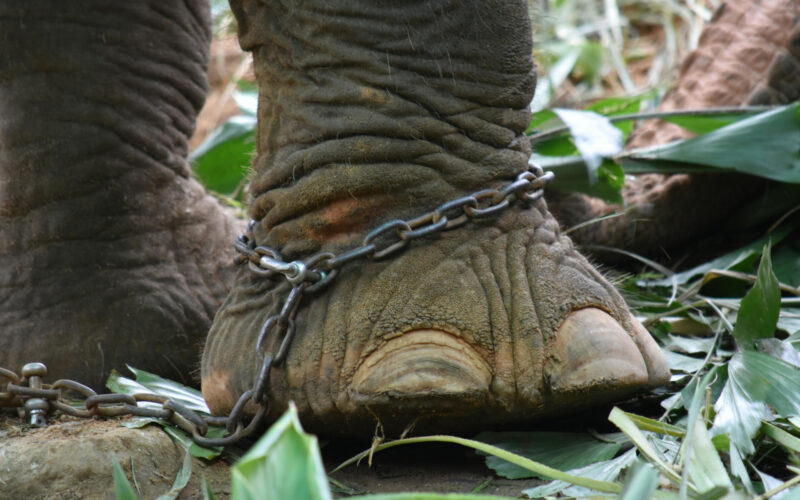
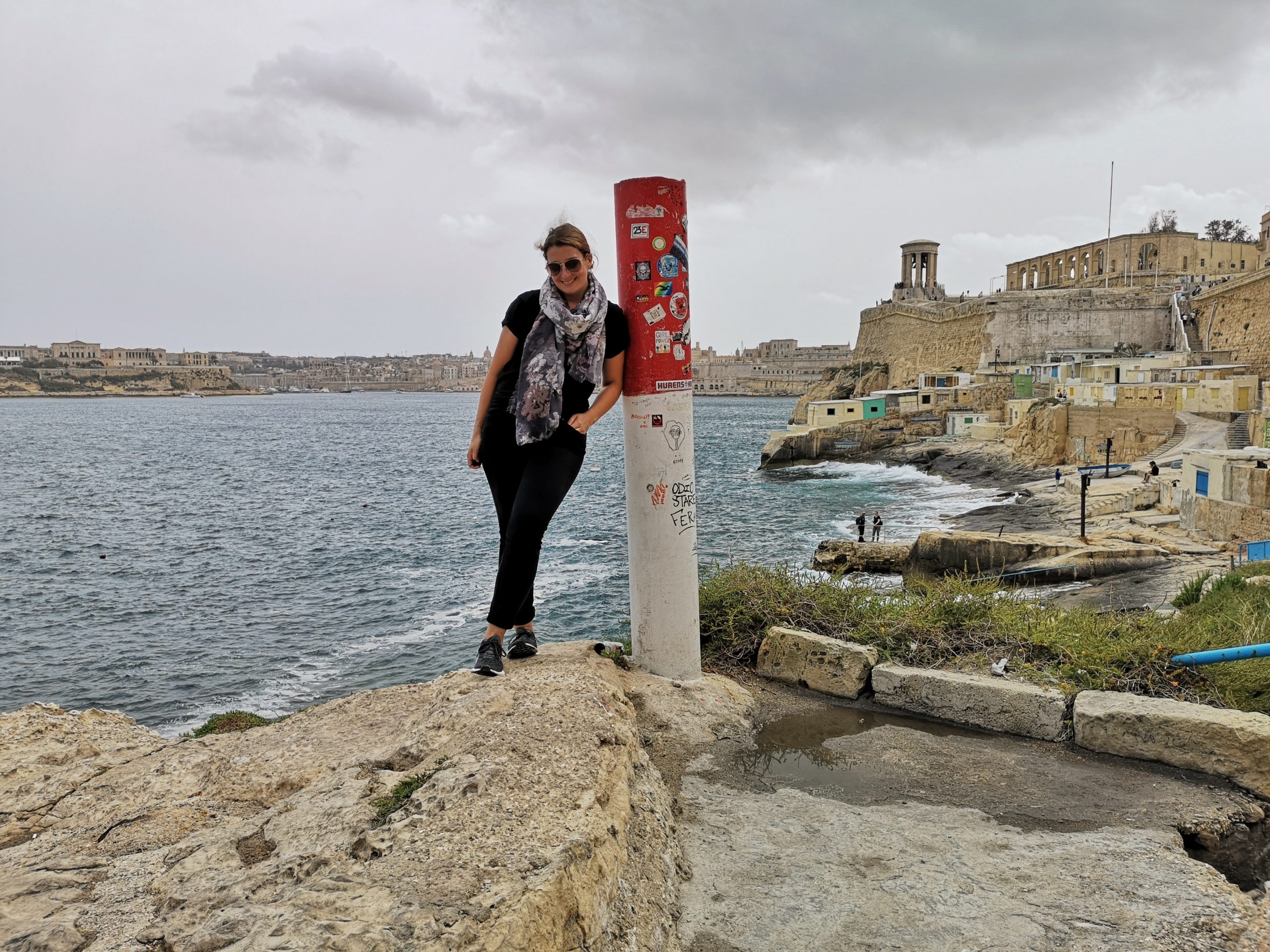
2 Replies to “Spirituelle Stätten in Kuala Lumpur”